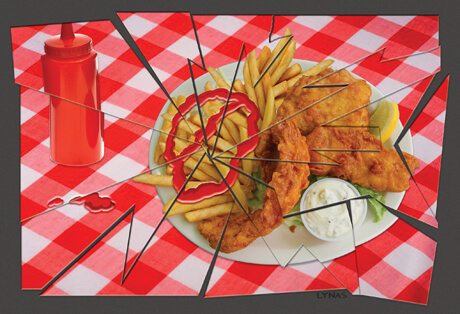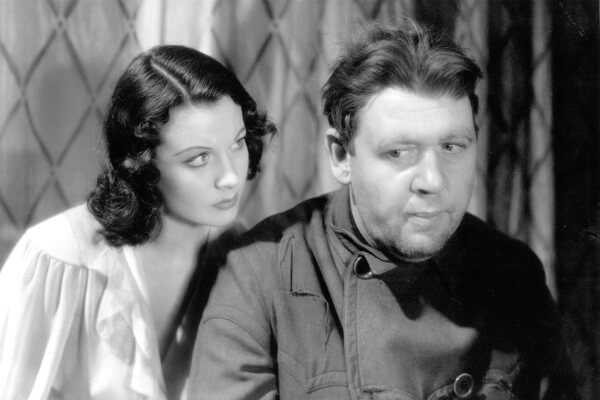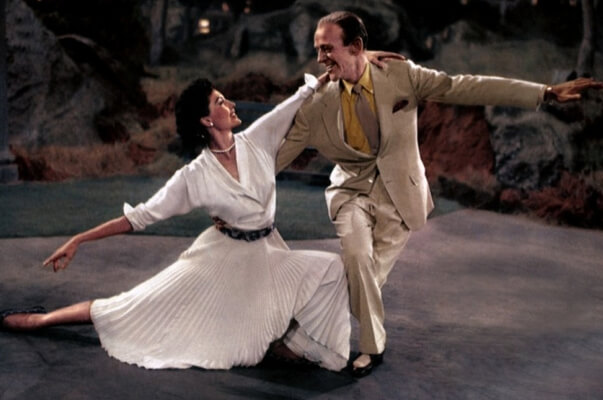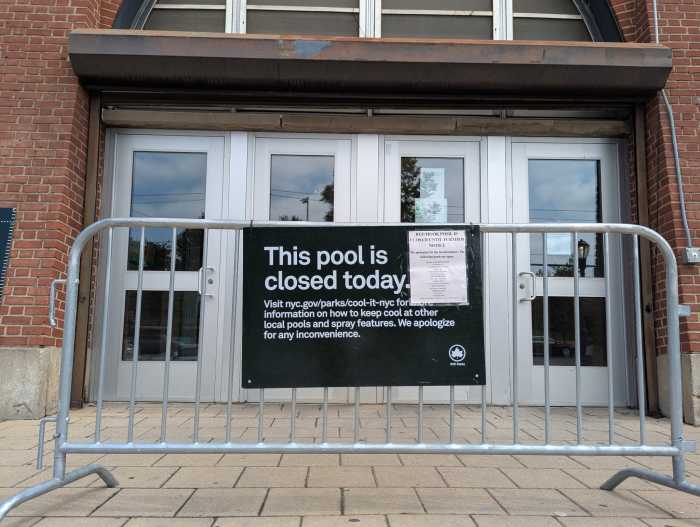USE IN THE NOH stanwyck crawford et al.jpgJoan Crawford and Barbara Stanwyck with the husbands Franchot Tone and Robert Taylor. | SIMON & SCHUSTER
Although she is not as celebrated and written about as her contemporaries Katharine Hepburn and Bette Davis, a very strong case could be made for Barbara Stanwyck (1907-1990), far more versatile than either, as the pre-eminent American film actress of the sound era. Easily supporting this assertion are her films themselves, 88 in all, which include more bona fide movie classics and contain more honestly good work by the actress than are represented by the careers of Hepburn and Davis combined.
“Double Indemnity,” “The Lady Eve,” “Remember the Night,” “Meet John Doe,” “The Bitter Tea of General Yen,” “Forty Guns,” “Stella Dallas,” “The Furies,” “Baby Face,” and “Union Pacific” can be counted as classics, while Stanwyck’s performances in a myriad of lesser soap operas, melodramas, Westerns, and pre-Code raunchfests were never less than interesting and often terrific, however indifferent the vehicle. Her relative lack of recognition is righted with a vengeance this fall with a monumental new biography, “A Life of Barbara Stanwyck: Steel-True,” by Victoria Wilson, which is accompanied by a month-long retrospective of her films at Film Forum. (209 W. Houston St., Dec. 6-31; filmforum.org).
The book, a real labor of love 15 years in the making, is 1,044 pages and only takes Stanwyck’s life up to 1940! It is safe to say that no actor has ever received such exhaustive treatment and the book is researched to a fare-thee-well, with the author scoring interviews with the ever-diminishing ranks of survivors who knew or worked with the actress — as well as combing through endless fan magazines of the period and other publications, not to mention eBay.
Stanwyck’s oeuvre says it all, Adonis brings back sexy
Wilson is obsessed with context, and anyone opening these pages better be prepared for what amounts to a history of American film itself during Stanwyck’s career, as well as the entire world around her. Prohibition, the Depression, and two World Wars are covered at length, as are the lives and careers of virtually all Stanwyck’s important co-stars and directors. Hence, you get many a digression like a ten-page description of the making of the 1936 Garbo version of “Camille.” Why? Stanwyck’s second husband, Robert Taylor, was the star, and the film was an important professional milestone for him. Added to this overwhelming wealth of factual information is Wilson’s critical breakdown of not only Stanwyck’s films, but many others, as well.
Thankfully, Stanwyck’s talent and intriguing life are rich enough to justify such microscopic handling. She was born Ruby Stevens in Brooklyn, and the accent from her youth remained an inescapable part of her persona, whatever the role, like Bette’s cigarettes or Kate’s tremulousness. When she was four, her mother, pregnant with her sixth child, was killed when she was pushed off a trolley car by a drunkard. Soon abandoned by her father, she was placed in some 10 foster homes before joining her older sister Mildred on the stage, eventually appearing in the “Ziegfeld Follies” of 1922. More work followed and she established herself as a strong dramatic actress when Hollywood, in need of new faces who could really talk, beckoned in 1929. She moved to California and never looked back, becoming one of the most respected, popular, and highest-paid actresses of her day. It is shameful that she never won an Oscar until a special one was granted in 1982.
Although it leaves out a personal favorite, “The Lady Gambles” (1949), in which she gives a rivetingly raw performance as a compulsive gambler, Film Forum’s selection should delight all hard-core Stanwyck-philes. With beady eyes, a prominent Roman nose, and a curly-lipped snarl of a mouth, she was never a conventional beauty, but she had a smashing body (if a trifle long-waisted and satchel-assed) and was probably the truly sexiest of the major female stars. It wasn’t the softly yielding come-hither of a Monroe or the goddessy but overt vampishness of Dietrich, but a wonderfully pragmatic and natural sensuality that was, like everything else about her, so very real. It’s what makes her so irresistibly watchable and instantly identifiable in wonderfully rowdy early 1930s delights like “Baby Face,” “Ladies They Talk About,” and “Night Nurse.” “Ladies of Leisure,” from 1930, directed by close collaborator Frank Capra, made her a star.
Stanwyck had a terrifically vibrant, swinging walk — which she said she learned from watching panthers in the zoo — that immediately announced her as a life force to be reckoned with. Her voice, even with those ubiquitous nasal Noo Yawk intonations, could be incredibly seductive and moving in more hushed emotional moments. (And, when impersonating a Brit in her brilliant comic turn as “The Lady Eve,” her greatest performance, she out-poshed the Lady herself, Greer Garson.)
Her two most defining dramatic performances are “Stella Dallas” and “Double Indemnity.” Stanwyck confessed she had given her “life’s blood” to her performance as the pitiably over-dressed vulgarian mother in “Stella Dallas.” Such is the miracle of her empathic gifts that, as excruciating as Stella’s behavior is, rather than squirm for her, you completely identify with her basic humanity and might even think her drag ain’t quite that bad. The scenes of the failed birthday party, Stella overhearing her treasured daughter’s friends cattily bitching about her, and then tearfully watching her daughter get married, while outside and in the rain, biting a soggy hankie, simply tear you to shreds emotionally.
No matter how many times you watch this greatest of noirs, Stanwyck’s Phyllis Dietrichson in “Double Indemnity” is eternally mesmerizing — like watching a cobra — glittering-eyed, mouth malevolently gleaming, and infinitely mysterious. There had been prominent screen villainesses before her — Bette in “Of Human Bondage,” “Bordertown,” and “The Little Foxes,” Ida Lupino in “The Light That Failed” and “They Drive By Night” — but they were showboaters of evil, obvious human volcanoes bent on destruction. With the subtlest and most minimal of means, Stanwyck makes Phyllis not only completely real (even with one of the worst wigs in film history) but also absolutely terrifying in her watchful, unflinching stillness. When it is revealed that, as a nurse, she killed her charge to marry her husband, you not only buy it, but also wonder what other unknown horrors she probably committed.
Her later work also outshone those of her contemporaries, and, unlike Bette and Kate, who for too long plied their respectively jerky and quivering shtick — in unintentionally humorous fashion, becoming caricatures of themselves — Stanwyck knew when to quit, maintaining her dignity.
One final histrionic conflagration was “The Thorn Birds” (1983), with its electrifying climactic moment when she confesses her lust for Richard Chamberlain’s much younger priest. Although 75 at the time, she was never more courageously and nakedly emotional in a scene that remains a dramatic rarity in its unflinching depiction of senior physical desire.
The drag comedian Charles Pierce used to say, “Barbara Stanwyck was so butch she used two jockstraps as a brassiere!” I was lucky enough to attend her Lincoln Center tribute in 1981 (along with William Holden, Joan Bennett, Myrna Loy, and Frank Capra), and a highlight of this starriest of nights was a montage, set to Donna Summers’ just-released “Bad Girls,” featuring Stanwyck at her most aggressive, slapping the crap out of various co-stars through the years. Inducted into the Cowboy Hall of Fame for her rootin’-tootin’, hard-riding work in her beloved Westerns, she has traditionally been a very tailored object of sensual fascination for generations of lesbians and straight women alike.
Wilson told me years ago that there’s no verifiable evidence of anything gay in her life, despite decades of rumors about her and the breathtakingly beautiful Robert Taylor. At the time, Wilson decried biographers who relied on hearsay or pure fabrication to promote the notion of Stanwyck being lesbian, like writer Boze Hadleigh, whom the star literally threw out of her house when he insanely persisted in interviewing her in this vein. For me, the one suggestion of proof is the portrait of Stanwyck that Joan Crawford was said to have always kept by her bedside, as well as a photo in Wilson’s book of the two of them, sitting very intimately together in a nightclub while their respective spouses, Taylor and Franchot Tone, seem rather pushed to the side.
Wilson is roughly halfway through Stanwyck’s life, so who knows what revelations she may have uncovered for her second volume in the years since we spoke?
More than a few people have suggested that the quiet Japanese filmmaker Yasujiro Ozu (1903-1963) is the greatest movie director of them all, particularly for his “Tokyo Story” (1953). I couldn’t bear his films when I was younger; their meditative pace and lack of dramatic incident drove me crazy. They mostly seemed to be about brewing endless cups of tea or sake. I’ve changed my tune with the years and now find his work to be a gloriously rewarding haven of humanity and sanity in an ever more chaotic and alienating world. So many of his movies involve marrying off a somewhat aging daughter (usually played by the — always described as and rightly so — luminous Setsuko Hara, who never married and was rumored to be lesbian). This seemingly simple premise can be, in Ozu’s hands, as compelling as any crime thriller and as emotionally rewarding as 10 Meryl Streep vehicles.
The director was a hard-drinking man who, when young, was expelled from school because of a love letter he sent to another boy. He remained single and lived with his mother until her death in 1960, following her to the grave from cancer three years later, on his birthday, December12.
The Film Society of Lincoln Center is presenting “Ozu and His Afterlives” through December 12, a survey that includes his “Equinox Flower” and “An Autumn Afternoon,” as well as evocative works by Claire Denis, Aki Kaurismaki, Wim Wenders, Jim Jarmusch, Hou Hsiao-Hsien, and others influenced by him. I wish they’d also included a film that influenced Ozu’s “Tokyo Story,” Leo McCarey’s “Make Way for Tomorrow” (1937), one of the most heartbreaking movies — about the “problem” of elderly parents — ever made. (filmlinc.com)
Tornado is one of the pre-Code dancers at the Adonis Lounge. | THEADONISLOUNGE.COM
Funny, but I always feel a little pre-Code when I go to one of the Adonis Lounge parties, which are happily coming downtown to the Village with a branch at the Actors Playhouse. As New York City becomes more and more Hays Code, with its relentless cracking down on all kinds of “sinful” fun, especially that which we know as gay — making a city like Cleveland seem a Sodom by comparison — it’s nice to know there’s still a place where you can go and, while the go go boys may not know your name, you certainly get to know theirs.
It’s a wonderfully raffish paradise of male pulchritude, the perfect place to take out-of-towners desperately in search of a cheap (and not so) thrill in our Bloomberg’ed Disneyworld. Bravo’s Andy Cohen was in the house last Saturday, with his ear-to-ear grin, as the dancers circled him like bees to honey, perhaps in hopes of a guest bar-tending shot on his “Watch What Happens.” And “Missy” Stanwyck had nothing on these boys for acting — an international bevy, from the Ukraine to Rio to Trenton, they charmingly make each and everyone feel special and, yes, oh-so dangerously rich. (theadonislounge.com)































